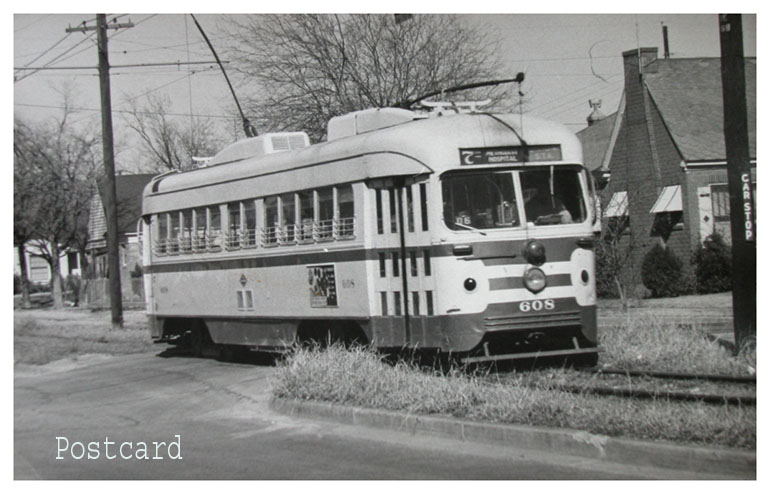|
�After we moved from Baytown to
Highlands in 1947, we lived very near the railroad,� Gene said. �I
remember the old steam locomotives and the electric interurbans. I
loved to wake up in the middle of the night by the sound of trains
passing by. I would lay there in my bed and count the rail cars
going by. One time I counted over 100 cars.�
Gene said his family�s rent house was
less than 100 yards from the railroad tracks at Buster Crossing.
�How it got that name I have never known and probably never will. We
boarded the interurban at Buster Crossing. If you were coming from
Baytown, you told the conductor that you wanted off at Buster
Crossing. When I would get off the interurban, I was home.
�Thompson Road was almost an
extension of old Market Street. As you would drive north on
Thompson, the first road you would cross was Jones Road. The next
was Battlebell. After making a left turn onto Battlebell, the first
right turn would be Buster Crossing. That section of Battlebell ran
parallel to the railroad tracks.
�Our house was on the north side of
the tracks. Only a few of the railroad crossings had names. On the
north side at that time were only two houses -- ours and the
Millers, not recognizable as such today.�
The Harrisons lived a mile from
downtown Highlands.
�The old Highlands railroad station
was on Main Street between San Jacinto and Cherry streets. It faced
Cherry Street. The open area around the railroad station was the
scene of many after school fights. Some were better than what we
used to see on TV. All clean fights. No kicking, biting, et cetera.
No one wanted to be known as a dirty fighter.�
Gene said he will never forget the
beautiful old Iron Horse steam locomotives. �When the diesel engines
replaced them I was heartbroken. Same thing when the electric
interurbans were replaced with ugly modern replacements.�
When his family first moved to
Highlands, it was a different world. Gene recalled it was �a serious
rice farming community. Two paved roads. No stop signs. No traffic
lights. Every family had gardens, raised their cattle and milked
their cows, raised chickens and had pigs and hogs. This was a
sustainable life way out on Battlebell Road.
�The railroad gave us many hours of
entertainment. During good weather, we would walk home from school
on the railroad tracks. We became expert at walking on a rail
without falling off. We picked dewberries along the sides of the
tracks every spring. We caught fish in the ditches on the sides of
the tracks. The fish came from rice field farms water overflow that
came from the Highlands Reservoir. Wild animals, birds, and snakes
were a part of our every day lives.
�A few times during the summer, I
would manage to get a dime or quarter from my parents to ride the
interurban to Baytown to visit some of my school friends. I would go
in the morning and come back in the afternoon.
�Safety in those days was never a
problem. Can you imagine a kid doing that today?�
Wanda Orton is a retired managing
editor for The Baytown Sun. |

